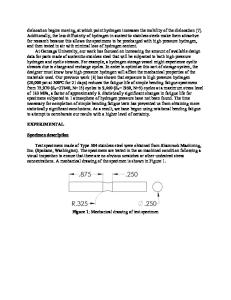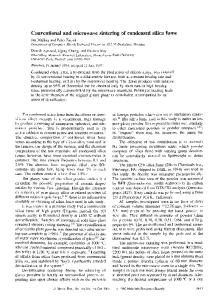Effect of conventional and microwave sintering on the properties of yttria alumina garnet-dispersed austenitic stainless
- PDF / 637,019 Bytes
- 12 Pages / 576 x 720 pts Page_size
- 14 Downloads / 313 Views
years, powder metallurgical (P/M) stainless steel components are increasingly being used for automotive and structural applications.[1] As compared to conventional casting techniques, P/M processing offers advantages such as lower processing temperature, near-net shaping, high final density, greater material use (.95 pct), and a more refined microstructure that provides superior material properties.[2] Among various grades of P/M stainless steels used, austenitic grades are the most widely used, with type 316L alone accounting for more than one third of the total P/M stainless steel consumption.[3] Typically, P/M stainless steels are consolidated through solid-state sintering, which is conducted at relatively lower temperatures.[4] Consequently, the sintered compacts have residual porosity, which restricts their applications. Several researchers[5–8] have examined the effect of sintering temperatures on the densification and mechanical properties of 316L austenitic stainless steel. However, nearly all of the earlier reported sintering investigations have been conducted at temperatures ranging from 1100 °C to 1350 °C, which corresponds to solid-state sintering.[5–8] Dyke and Ambs[6] have reported an increase in the ultimate tensile strength and elongation with an increase in sintering temperature. However, they observed the opposite trend in yield strength and hardness variation. At lower sintering temperatures, densification enhancement can be achieved by using sintering aids that can form liquid phase at those temperatures. Shaw and Combe[9] reported that additives that stabilize a-phase increase densification rate during sintering of austenitic stainless steels. Despite densification enhancement, additives result in poor mechanical properties as they tend to segregate at the intergranular regions and form brittle phases. To overcome this, S.S. PANDA, Postgraduate Student, V. SINGH, Undergraduate Student, and A. UPADHYAYA, Associate Professor, are with the Department of Materials and Metallurgical Engineering, Indian Institute of Technology, Kanpur 208016, India. Contact e-mail: [email protected] D. AGRAWAL, Professor, is with the Materials Research Institute, The Pennsylvania State University, University Park, PA 16802 U.S.A. Manuscript submitted August 21, 2005. METALLURGICAL AND MATERIALS TRANSACTIONS A
supersolidus liquid-phase sintering is employed for consolidating single-phase prealloyed powders.[10,11,12] In this process, compacts are heated in between the solidus and liquidus temperatures, causing formation of liquid phase preferentially at the grain boundaries.[3,10,13] The presence of liquid phase generally enhances densification by increasing diffusion kinetics. This, in turn, leads to particle fragmentation and subsequent repacking, which results in densification due to capillary stress-induced particle rearrangement.[14] As stainless steels powders are typically fabricated through atomization, they have prealloyed, single-phase structure, and therefore are amenable to supersolidus sintering.[15] The P/M proc
Data Loading...











